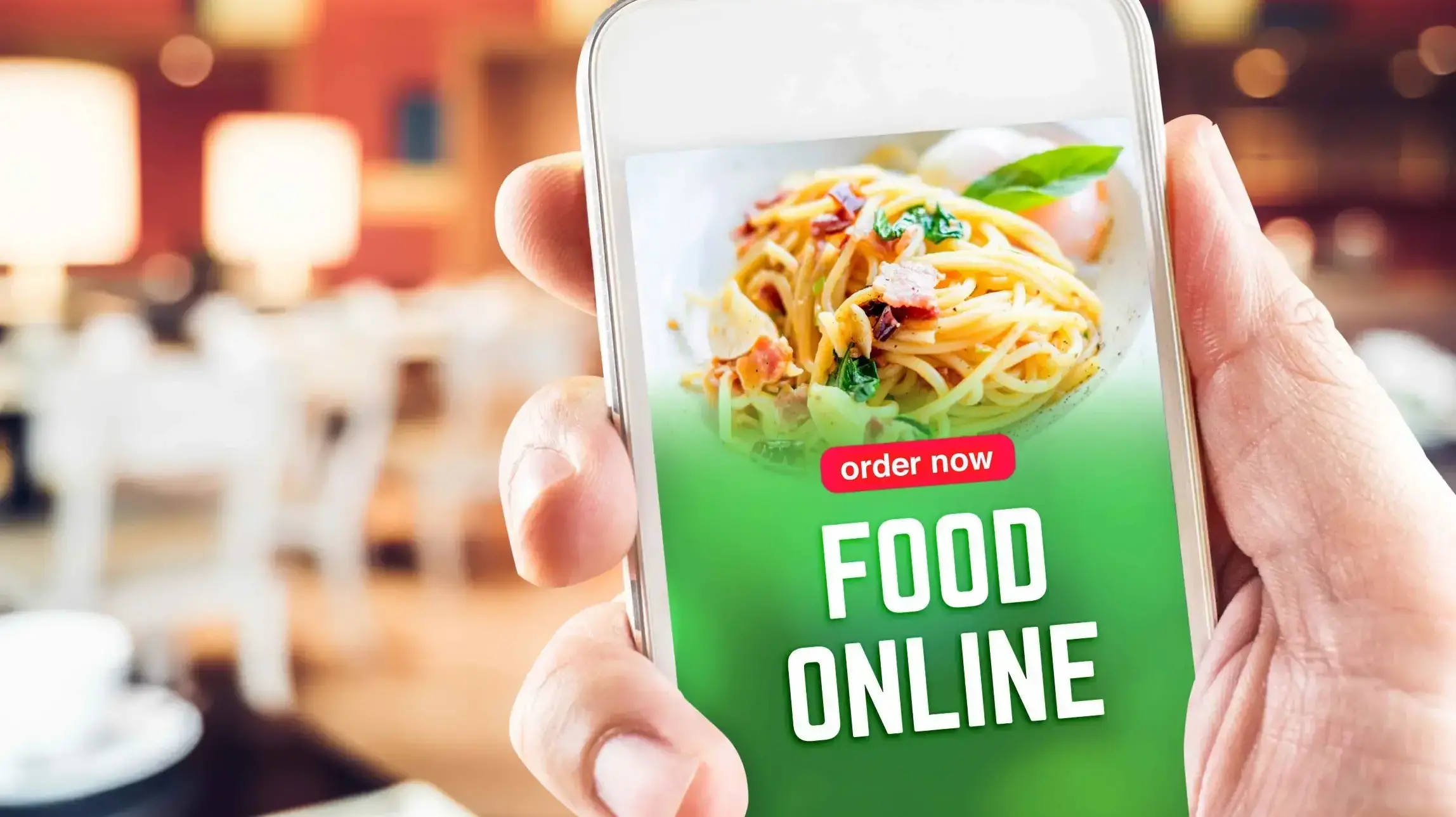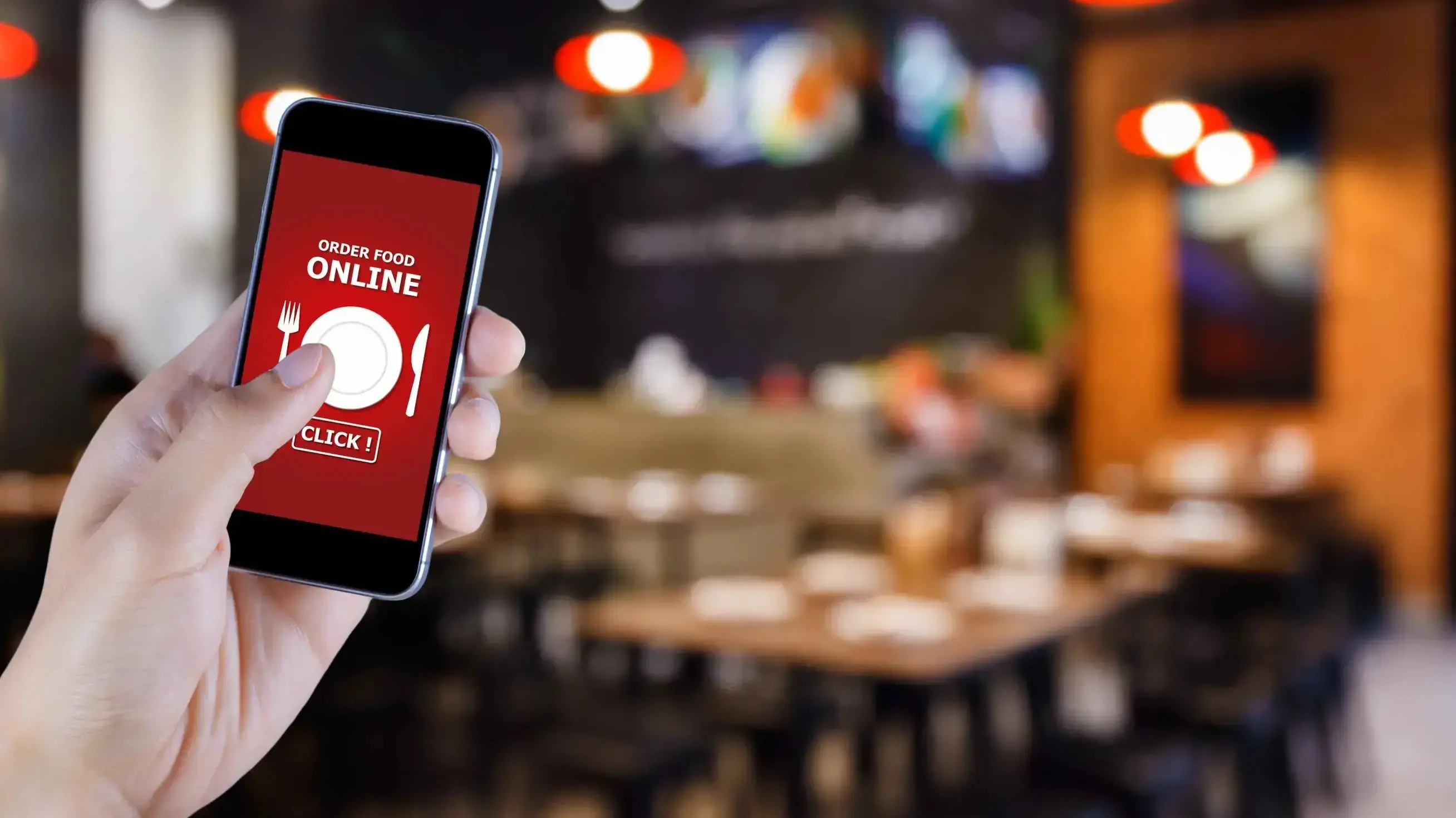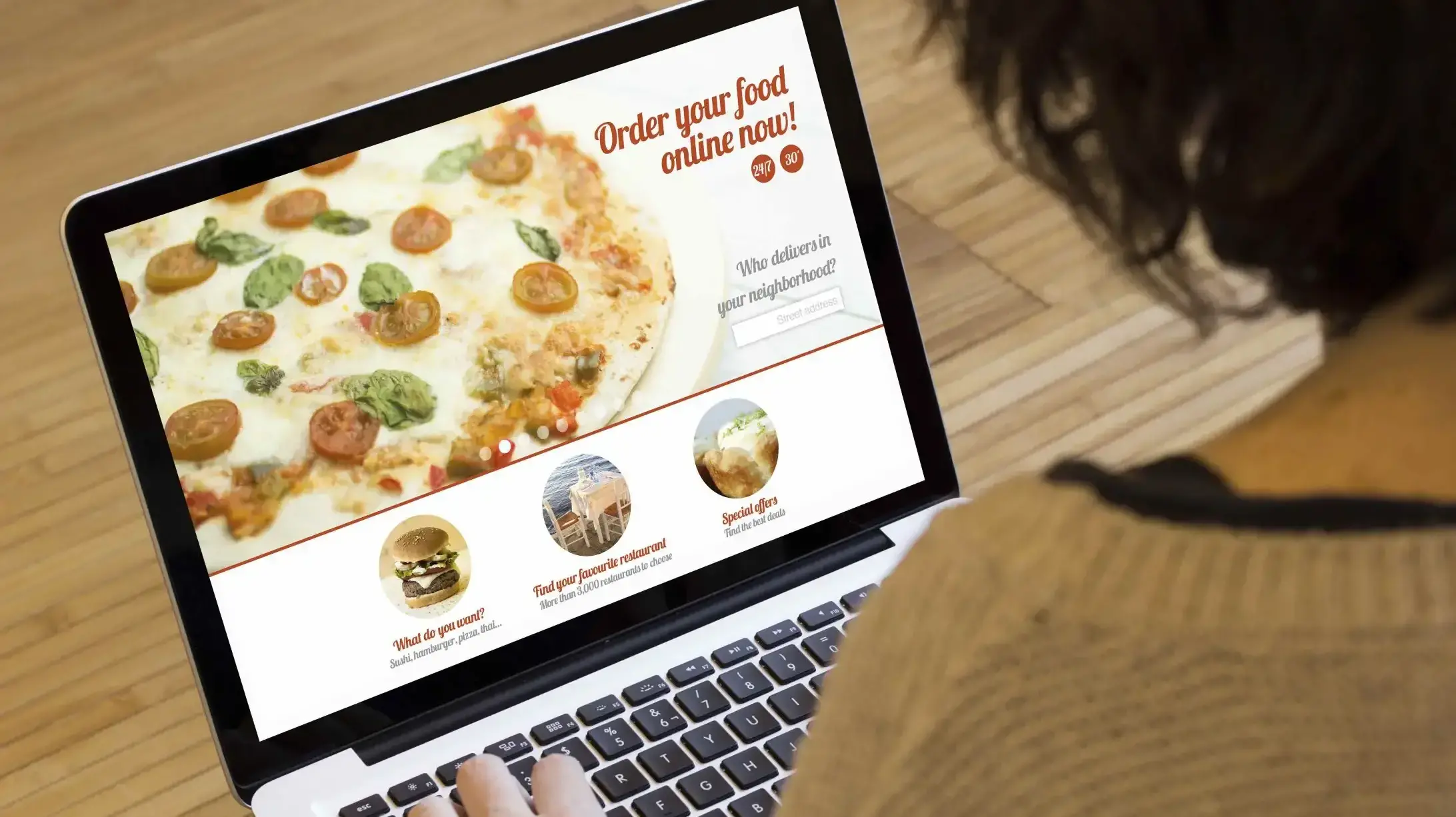Creating an effective restaurant website is essential for success.
It's not just a place to showcase your food but a powerful marketing tool.
A well-branded site helps potential customers find you, make reservations, learn your story, and access key service details, all while boosting your online visibility.
Why Should You Take Your Restaurant Online?
Customers expect that restaurants will allow them to place their orders online.
You're missing out on a great opportunity to grow your restaurant if you don't have an online website where customers can place orders.
Here are some of the benefits of online restaurants:
- Order online
For people who are in a hurry, it would be a lot easier if they could place an order online, instead of having to call the restaurant or order take-out.
Additionally, when making orders on the phone, sometimes mistakes can occur.
- Low-cost marketing
By having an online presence for your restaurant, you won't have to spend money on expensive billboards and media advertising.
A decent social media engagement on social platforms and a user-friendly website can go a long way when marketing your business.
- Mobile ordering
Your restaurant needs to have a mobile-optimized version of the website.
There are times when people cannot make a phone call to order food, whether they're in a crowded area or at a meeting.
Mobile ordering lets customers place orders easily and hassle-free, ensuring you never lose a customer.
- Customers' data
Website analytics provide valuable data like phone numbers and emails for targeted promotions.
You can see if customers prefer ordering via website or app, track popular items, and identify regular customers.
- Fast and easy
One of the main reasons why people order food online is because they can save time and money. Just about anyone with a smartphone can use it to order food online.
- Reduce staff costs
With an online ordering system, you can reduce staffing costs.
Orders will appear on the kitchen display system, eliminating the need for an employee to sit by the phone and take every single order manually.
- Less abandoned orders
A restaurant's online ordering system helps to eliminate abandoned or fake orders.
Customers can make online payments when placing their orders, which helps to avoid the inconvenience of having to deal with abandoned orders.
Tips for Your Restaurant Website Success

Display Your Menu Clearly
Include your menu on your website using HTML, not images or PDFs, for easy viewing and searching.
Clearly Show Your Hours and Contact Info
Place your hours, phone number, and address prominently on your homepage.
If you have multiple locations, list them all to enhance user experience and improve Google rankings.
Enable Online Reservations
Allow visitors to make reservations online to simplify booking for customers and reduce staff workload.
Use Attractive Food Images

Entice guests with beautiful photos of your dishes to show them what to expect.
Optimize for Mobile Devices
Ensure your website is mobile-friendly with clear messages and minimal text to engage users on mobile devices.
Reflect Your Brand Story
- Include an About Us section that shares your story and values.
- Stay consistent with your brand throughout the website.
Optimize Your TripAdvisor Listing
Update your TripAdvisor profile with accurate details and photos, and encourage customers to leave reviews.
Avoid Auto-Play Media
Don't use auto-play videos or music, as they can annoy visitors and slow down your site. Let users choose to play media.
Include Customer Testimonial
Showcase positive reviews and testimonials from your customers to build trust and encourage new visitors to try your restaurant.
Provide Online Ordering
Offer an online ordering system for takeout or delivery to make it convenient for customers who prefer dining at home.
Connect Appropriate Social Media

- Link your social media accounts to your website.
- Keep them consistent with your menu, culture, and brand.
Use Clear Calls to Action
Guide your visitors with clear calls to action, such as "Book a Table" or "Order Now," to encourage them to take the next step.
Ensure Website Accessibility
Make your website accessible to all users, including those with disabilities, by following web accessibility guidelines.
Keep Your Content Updated
Regularly update your website with new menu items, events, or promotions to keep visitors engaged and informed.
9 Steps to Get Started with Your Restaurant Website

Creating a website for your restaurant is simpler than you might think. Follow these step-by-step instructions to set up your restaurant site.
1. Purchase a Domain and Hosting
First, buy a domain name and a hosting plan.
When choosing a hosting provider, look for:
Security: Protect your site from data loss due to software bugs, hardware failures, or cyberattacks.
Support: Select a provider that offers excellent customer and technical support.
Storage Capacity: Ensure the plan meets your data storage needs.

Support
Select a provider that offers excellent customer and technical support.

Storage capacity
Ensure the plan meets your data storage needs.
At Verpex, we provide 24/7 support and are always available when you need us. We also deliver top-notch speed, performance, ample storage, and robust security features.
2. Secure Your Email
Email security is crucial to protect your brand's private data from hackers.
Use email security services or gateways to safeguard your communications.
3. Install a Content Management System (CMS)
Use a CMS like WordPress to build your website without advanced technical skills.
A CMS allows you to create and manage your site's content easily.
4. Design Your Website
Your website should be attractive and reflect the quality of your establishment.
You can use restaurant website templates or hire a designer to create a custom look. Good design balances style and substance to make a positive impact.
5. Create a Memorable Logo

Design a logo that tells your brand's story and appeals to your target audience.
You can use online tools like Canva and Crello that offer a variety of templates and design elements, or hire a freelance designer to craft a unique logo.
6. Add Useful Plugins
Enhance your website's functionality with plugins.
Plugins can help with:
- Email Forms: Engage users and collect contact information.
- Social Sharing Buttons: Encourage visitors to share your content.
- Image Compression: Improve website speed by optimizing images.
- SEO Optimization: Improve your search engine rankings.
7. Produce Engaging Content
Create content that offers value to your visitors. Make sure it's original, easy to read, and aligns with your brand.
Tips for engaging content include:
- Writing in a clear, conversational style.
- Adding images to complement your text.
- Staying authentic to your brand's voice.
8. Optimize for SEO
Improve your site's visibility in search engines by:
- Using relevant keywords naturally in your content.
- Optimizing images with descriptive alt text.
- Crafting clear meta descriptions and URLs.
- Using proper headings to structure your content.
9. Promote Your Website
Connect your website to your social media pages to increase visibility.
Consider:
- Social Media Marketing: Engage with your audience on platforms they use.
- Pay-Per-Click Advertising: Use targeted ads to reach potential customers.
- Influencer Partnerships: Collaborate with influencers to endorse your restaurant.
Expanding Reach with a Multilingual Website
In today’s global marketplace, offering your restaurant website in multiple languages can significantly increase your customer base.
Here’s how a multilingual website can benefit your business:
Attract International Tourists: Visitors from different countries are more likely to dine at your restaurant if they can navigate your site in their native language.
Enhance Local Appeal: In multicultural cities, providing language options helps you cater to a diverse local audience, making your restaurant more accessible to non-English speakers.
Improve User Experience: A website that speaks directly to the customer in their language creates a more comfortable and personalized experience, encouraging repeat visits.
Boost SEO in Multiple Markets: Offering content in various languages improves your visibility on search engines, helping you rank higher in foreign-language search results.
Build Trust and Credibility: A multilingual site shows that your restaurant values inclusivity, which helps build trust with both locals and international customers.
Implementing Schema Markup for Better SEO
Schema markup is a powerful tool that helps search engines understand your website content better, improving your restaurant’s online visibility.
Here's how implementing schema markup can benefit your SEO:
Enhance Search Engine Visibility
Schema markup helps search engines display rich snippets (like reviews, prices, or ratings), making your restaurant stand out in search results.
Improve Local Search Ranking
By using local business schema, your restaurant’s address, phone number, and opening hours become more visible to people searching nearby.
Boost Click-Through Rates
Rich snippets, like photos of dishes or special offers, make your listing more appealing and clickable, increasing traffic to your site.
Highlight Menu Items
Use schema to feature your menu items in search results, allowing customers to see what’s on offer before they even visit your site.
Increase Mobile Search Performance
Schema markup ensures that your restaurant’s information is displayed accurately and effectively on mobile devices, which is crucial as more people search on their phones.
Final Remarks
Creating an outstanding restaurant website means investing in the right tools.
With impressive design, quality content, and memorable elements, you'll capture customers' attention and boost conversion rates.
Take the time to build a website you're proud of—just like your restaurant.
For secure hosting solutions ideal for small businesses, visit Verpex to find the perfect hosting package.
Frequently Asked Questions
What should I put on my restaurant website?
You should include your basic information, your menu, enticing photos, links to your social media, and engaging content on your restaurant's website.
How much does it cost to create a restaurant website?
For an essential restaurant website, it will cost you from $3000 to $10,000 on average if you hire a web design agency. However, if you decide to use a CMS and build it yourself, the cost will be much lower.
Can I create a restaurant website for free?
Yes, you can create a restaurant website for free by using free website builders or CMS plans.
Are website builders easy to use?
One of the easiest ways to build a website is with a website builder. Using a website builder doesn't require any programming and coding skills.
What pages does a restaurant website need?
A restaurant website typically needs these key pages to offer best services and remain relevant:
1. Home - Overview and introduction. 2. Menu - Detailed list of food and drinks. 3. About - Story, mission, or history of the restaurant. 4. Contact - Location, phone number, and business hours. 5. Online Ordering - Option to place orders online. 6. Reservations - Booking system for table reservations. 7. Gallery - Photos of food, ambiance, and events. 8. Reviews - Customer testimonials or media reviews. 9. Events/Catering - Information on special services or private events.
Do you need a website for a restaurant?
Yes, a website is essential for a restaurant.
It allows you to showcase your menu and atmosphere, provide online ordering or reservation options, share important details like location and hours, and reach a wider audience to attract more customers.

I've been navigating the web hosting waters for years now. As the Chief Editor at Verpex, I team up with some awesome writers to dish out the good stuff on hosting. Got a Master's in Journalism, so I always have an eye out for quality. Whether you're just dipping your toes or you're a seasoned surfer, I'm here to make everything web hosting feel like a breeze
View all posts by Julia Lozanov






















